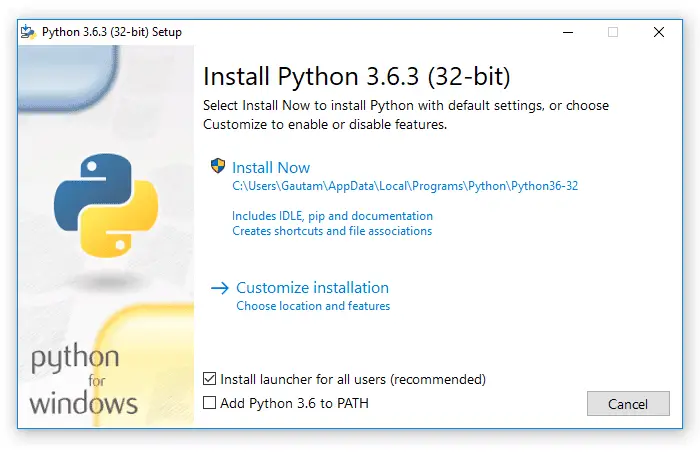Python source code is available under the GNU General Public License (GPL). Python interpreter is free, and downloads are available for all major platforms (Windows, Mac OS, and Linux ) in the form of source and binary. You can download it from the Python Website: python.org.
Although Python version 3 is the latest, version 2 is widely used for development.
Install Python on Linux
The Python interpreter is usually installed as /usr/local/bin/python on those machines where it is available; putting: /usr/local/bin in your UNIX shell's search path makes it possible to start it by typing the command "python" to the shell.
Python 3 can be installed On Ubuntu Linux using the following terminal command.
$sudo apt-get install python3-minimal
Install Python on Windows
On Windows machines, a Python installation is usually placed in C:\Users\UserName\AppData\Local\Programs\Python\Python(Version), although you can change this while running the installer.
To install Python on a Windows machine, follow these steps:
- Download Python for Windows.
- Run the Python installer.
- Here, you will see the Python wizard, which is very easy to use. Just accept the default recommended settings and click on the Next button, wait until the installation is complete, and you are done.

The latest version of python binaries is available on the Python download page.
Install Python on MAC
- Python is already a part of MAC OS.
- Open the terminal and type python.
Python GUI
There are various GUI-based Python IDE that Python programmers can use for a better coding experience.
Names of some Python interpreters are:
- PyCharm
- Python IDLE
- The Python Bundle
- pyGUI
- Sublime Text etc.